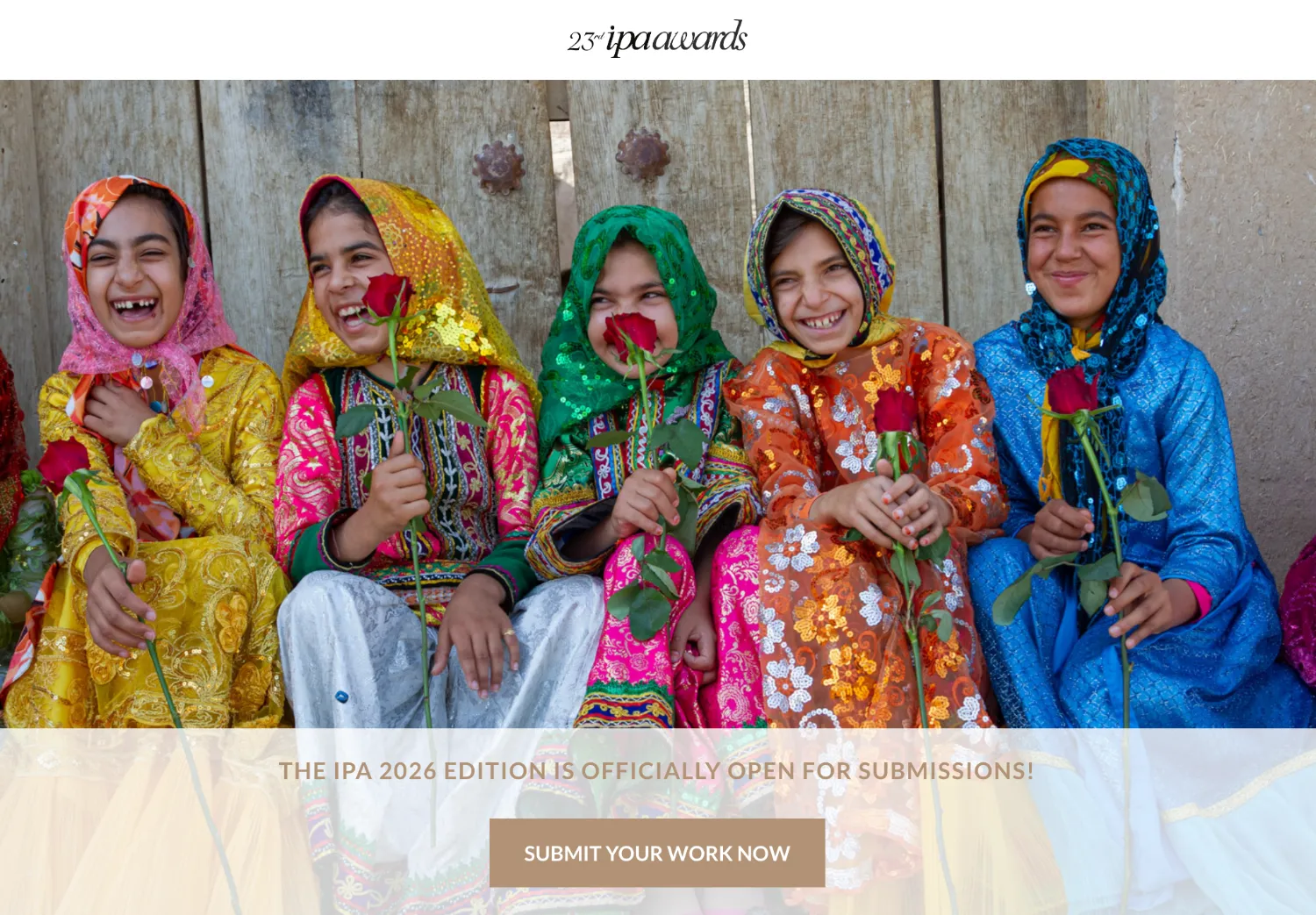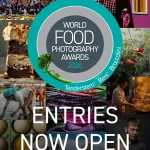From still-life elegance to behind-the-scenes kitchen action, food and drink photography contests celebrate the visual beauty and cultural power of what we eat and drink. Whether you’re a seasoned food photographer, a content creator, or a culinary enthusiast with a creative eye, these competitions offer the perfect opportunity to share your vision.
Our curated list includes top food photography competitions, culinary photo awards, and beverage photography contests from around the world — all with open calls, deadlines, and prizes to match your style and skill level.
Next Food & Drink photo contest

International Photography Awards 2026 (IPA 2026)
List of Food & Drink photography competitions
Explore our updated calendar of Food and Drink photography open calls, strategically arranged by submission dates. Each listed competition represents a unique opportunity to capture the art of culinary visual storytelling, from gourmet photography contests to innovative beverage styling challenges.
If you know of a food and drink photo contest that is not on our list, send it to us and we will add it!
January 2026
February 2026
Why Enter a Food or Drink Photography Contest?
Participating in a food photography contest is more than a chance to win recognition — it’s a way to challenge your creative approach, engage with current trends, and contribute to the evolving visual language of gastronomy.
Photographers entering these contests often gain:
Exposure through international platforms, online features, or print publication.
Career opportunities in food media, publishing, or branding.
Feedback and benchmarking against peers in the same niche.
Portfolio growth with purpose-driven projects.
Many food-focused photography competitions also serve as a bridge between professional and amateur photographers, offering both technical and conceptual categories.
The Essence of Food and Drink Photography Competitions
Professional photographers understand that Food & Drink photography is a nuanced art form that transcends simple documentation. These prestigious photography contests celebrate the intricate relationship between visual storytelling and culinary experiences. From contemporary Food & Drink photo competitions to annual international photography awards, these challenges provide photographers with unprecedented opportunities to transform ordinary culinary moments into extraordinary visual narratives.
The best Food & Drink photography contests are carefully curated platforms that recognize photographers who can capture more than just the aesthetic appeal of food and beverages. They seek artists who can communicate cultural stories, emotional connections, and innovative perspectives through their lens. Whether it’s a gourmet photography contest or a sophisticated culinary photography challenge, these competitions push the boundaries of visual representation.
What Types of Food & Drink Photography Contests Are There?
The world of food photography is broad. These are some of the most common categories and types of contests you’ll find:
1. Food Styling Photography Awards
These competitions focus on composition, color, texture, and visual balance. Ideal for photographers and stylists who excel at turning ingredients into visual art.
2. Beverage Photography Competitions
A more specialized category, covering everything from artisanal cocktails to coffee, wine, and drinks branding. Lighting and mood often take center stage.
3. Cultural and Gastronomic Photography Contests
These are closer to documentary or editorial projects, often celebrating food as cultural heritage. Great for photographers interested in food stories, rituals, and traditional preparation methods.
4. Commercial & Restaurant Photography Challenges
For those working with brands, restaurants, or chefs — these contests highlight commercial work with strong visual identity and clarity.
5. Fine Art Food Photography Competitions
These awards treat food not just as subject matter, but as metaphor, concept or artistic medium. Perfect for photographers exploring the symbolic, abstract or surreal side of gastronomy.
What Makes a Strong Submission?
Each competition has its own criteria, but in general, successful entries in culinary and beverage photography contestsshare some common strengths:
Clarity of concept — What’s the image trying to say?
Technical execution — Sharpness, lighting, color balance, and control.
Styling and atmosphere — Especially in contests with a commercial or editorial angle.
Originality — Judges respond to fresh perspectives, not copies of trends.
Storytelling — Especially important in cultural or documentary entries.
Some competitions may also require written statements or captions to provide context. In those cases, clear and concise writing can help strengthen your submission.
Beyond the Plate: Cultural Storytelling in Food Photography Challenges
Contemporary Food & Drink photography competitions have evolved far beyond simple aesthetic representations of culinary dishes. The most innovative international photography challenges now recognize food as a powerful medium for cultural storytelling, inviting photographers to explore the rich tapestry of human experiences embedded in culinary traditions.
These gastronomic photography contests increasingly feature categories that challenge photographers to capture the broader context of food preparation, consumption, and cultural significance. Judges seek images that reveal the human stories behind culinary traditions – documenting not just what people eat, but how food connects communities, preserves heritage, and reflects social dynamics.
Why Professional Photographers Pursue Food & Drink Photography Awards
Entering Food & Drink photography open calls is more than a competitive endeavor; it’s a strategic career move. These prestigious photography awards provide multiple professional benefits that extend far beyond potential prize money. Winning or even being recognized in international Food & Drink photography contests can dramatically elevate a photographer’s professional profile.
Professional exposure comes through publication in renowned culinary and photography magazines, potential collaborations with food brands, and recognition from industry experts. Many photographers have launched successful careers by strategically participating in Food & Drink photo challenges, using these platforms to demonstrate their unique visual language and technical prowess.
How to Prepare Your Entry
Here are a few tips to help you submit with confidence:
Read the rules carefully — including image dimensions, rights, themes, and number of entries.
Avoid over-editing — let the textures and colors of food speak for themselves.
Don’t ignore the background — surfaces, props, and color palettes matter as much as the dish.
Submit series when relevant — some contests value cohesive storytelling across multiple frames.
Keep file naming and metadata clean and clear — especially for juries handling large volumes of images.
If you’re new to this space, you can start by entering free food photography contests or those that accept smartphone submissions.
Technical Considerations in Food & Drink Photography Challenges
Professional photographers understand that technical excellence is fundamental in Food & Drink photography competitions. Judges in prestigious photography awards evaluate entries based on multiple technical criteria. Lighting becomes a critical element, with photographers needing to master techniques that highlight textures, colors, and subtle details of culinary subjects.
Color management, composition, and post-processing skills are equally important. The best Food & Drink photography contests look for images that demonstrate not just technical proficiency but also creative interpretation. Photographers must balance precise technical execution with artistic innovation, creating images that are both technically impeccable and emotionally evocative.
Psychological and Sensory Dimensions of Food Photography Awards
Beyond technical skill and visual aesthetics, the most prestigious culinary photography competitions explore the deeper psychological and sensory dimensions of culinary imagery. These challenges invite photographers to create images that transcend mere visual representation, capturing the emotional and sensory experiences associated with food and drink.
Winning entries in international Food & Drink photography contests often demonstrate an ability to evoke memories, trigger emotional responses, and communicate complex cultural narratives through visual language. Photographers are challenged to consider how images can engage multiple senses, creating visual experiences that almost allow viewers to taste, smell, and feel the captured culinary moments.
Documenting Culinary Heritage Through Photography
Many prestigious Food & Drink photography open calls now include specialized categories that celebrate cultural diversity through culinary imagery. These challenges invite photographers to become visual anthropologists, capturing the intricate relationships between food, identity, and cultural preservation.
Photographers might document traditional farming practices, explore indigenous cooking methods, or capture the generational transfer of culinary knowledge. A single photograph can tell stories of migration, cultural resilience, and community bonds. For instance, an image of elderly hands preparing a traditional recipe might reveal generations of cultural inheritance, while a market scene could showcase the economic and social dynamics of a particular community.
Winning entries in these international Food & Drink photography competitions often transcend mere visual documentation. They become powerful narratives that communicate complex cultural experiences, challenging viewers to see food as more than sustenance – as a living, breathing expression of human culture and connection.
These photography challenges encourage a deeper understanding of global diversity, using the universal language of food to bridge cultural gaps and promote cross-cultural appreciation. By highlighting the stories behind culinary traditions, photographers contribute to a broader dialogue about cultural identity, preservation, and the evolving nature of human connection.

